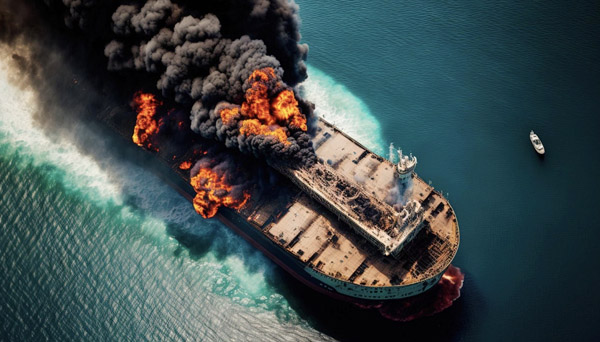
In a recent incident, an on-board explosion was triggered by an accumulation of methane gas within the windlass control room. This incident underscores the critical need for seafarers to be equipped with the right knowledge and tools to prevent such occurrences in the future.
Understanding the Incident:
The gas, when mixed with air in the right concentration, ignited inside the hydraulic control panel, causing an explosive flame and pressure wave that rapidly spread through the control room. It is likely that the methane gas entered through the cargo hold access hatch.
Post-Incident Measures:
In light of this incident, the windlass control room is now classified as an enclosed space. This classification necessitates mandatory gas testing before entry to ensure a safe atmosphere with sufficient oxygen levels.
Planning Gas Monitoring:
Seafarers should diligently plan gas monitoring during voyages, especially when carrying cargo. Despite adverse weather conditions during the initial week, testing should not be delayed. Rigorous testing over the last five days before arrival revealed no abnormal levels of methane gas.
Equip with Precision:
The incident highlighted the need for dedicated gas testing equipment on board, compliant with the IMSBC Code. Crew members should receive proper training on the correct use of this equipment.
Key Considerations:
Vessels should have a minimum of two gas meters, each with valid calibration certificates covering the entire voyage duration.
Gas meters should measure critical parameters such as methane (usually represented as a percentage of the Lower Explosive Limit or LEL), carbon monoxide, and oxygen levels.
Understanding LEL:
The Lower Explosive Limit (LEL) is the minimum concentration of a gas mixture (in this case, methane and air) below which an explosion cannot occur. For methane in normal air conditions (21% oxygen), the LEL is 5%.
Managing Coal Shipments:
It is imperative to be aware that coal emits varying levels of methane gas, necessitating stringent safety measures during handling and transport.
This incident serves as a stark reminder of the importance of proactive safety measures. By equipping themselves with the right knowledge and tools, seafarers play a crucial role in ensuring a secure and incident-free maritime environment.